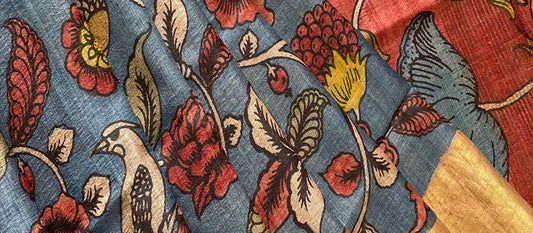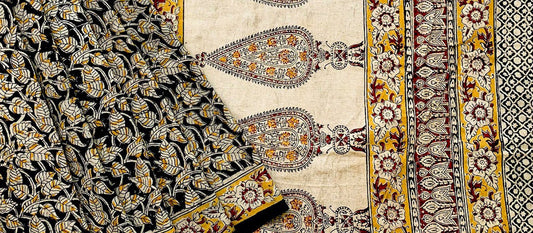
Leheriya Rajasthani Sarees
Leheriya has its origins in the vibrant state of Rajasthan, where craftspeople have been engaged in this ancient trade for decades. The word "Leheriya" itself comes from the Hindi word "Leher," which means "wave," and it perfectly captures the distinctive patterns that this method creates. Leheriya is a work of art that combines the artistic talent of the Rajasthani people with the extreme heat of the region to create a functional and beautiful handicrafts that are truly unparalleled.
History
The Leheriya style of tie and dye dates back to the 17th century, with its origins deeply intertwined with the rich heritage of Rajasthan. This intricate craft found favor among the royal families and Rajput rulers. Initially reserved for creating fabrics for their turbans (Saafa), it eventually adorned sarees worn by the women of these esteemed households.
Making of patterns
A Leheriya saree takes a great deal of expertise and accuracy to create, and it is a labor-intensive technique. The first step is choosing premium lightweight materials like silk, georgette, or chiffon to use as the canvas for the Leheriya designs. To begin, the fabric is tied with threads at predetermined intervals to form a string of tiny knots. The patterns that appear once the fabric is colored are determined by these knots. The dyeing procedure is labor-intensive; using natural dyes or other colors, artists carefully add beautiful hues. Leheriya sarees are known for their unique wave-like patterns, which are created when the dye is prevented from penetrating particular regions of the base fabric by tied knots. Depending on the artisan's level of ability, the patterns might range from straightforward diagonal lines to complex zigzags and waves. This is essentially a resist dye technique and thus is a blind process. The more the number of colors and finer the pattern, the more complex it is to be achieved uniformly.
Single directional wave like patterns are called “Leheriya” while an overlapping check type pattern achieved by doing the process of leheriya twice on either side of the diagonally opposite ends results into “Mothara”.
This beautiful dyeing technique has been further explored into a free range of patterns resulting into “Shibori” which is yet another modern and stunning take on this craft.
Fabric
Leheriya, a traditional craft, was historically practiced on thin cotton and silk fabrics. However, contemporary variations have expanded the range of materials used for this craft. Nowadays, you can find Lehariya work on fabrics such as Kota Doria, Chiffon, Organza, Chanderi or Maheshwari silk and Georgette.
Color
These sarees frequently showcase vibrant combinations, including deep blues, fiery reds, sunny yellows, and lush greens, resulting in a captivating visual experience. The deliberate selection and arrangement of colors contribute to the distinctiveness of each Leheriya saree. Leheriya is
an ancient craft that has preserved its authentic essence since its inception. Originally, this technique was employed to create fabric for Saafa (turbans). Over time, artisans began using this vibrant and colorful method to embellish sarees. Nowadays, Leheriya patterns can be found adorning various garments, including Lehenga Cholis and Salwar Kameez. The ease of online shopping for Leheriya sarees has made this timeless tradition accessible to people worldwide.
At Vemshala, you’ll find a delightful collection of Leheriya sarees. We only keep authentic handcrafted products from National Award winner artisan, based in Jaipur.




